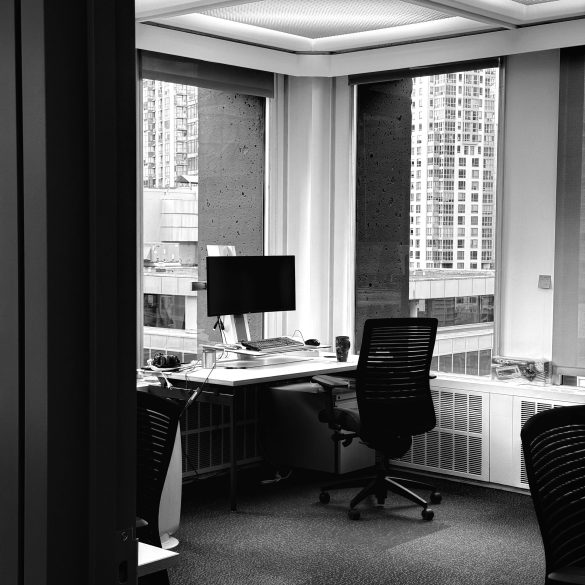Argentina Retirement Investment Diversification: Stronger Long-Term Security Guide
Let me start with a scene that should resonate with anyone thinking about their financial future in Argentina. Picture this: you’re sitting in a classic Buenos Aires café, sipping a cortado, flipping through headlines about inflation, political turnover, and currency controls. You glance at your retirement projections—maybe a mix of pesos, bank CDs, some real estate, and perhaps a handful of foreign ETFs—and wonder, “Is this really enough? What if things swing wildly again next year?” Sound familiar?
I’ve spent 15+ years advising on retirement and wealth management in volatile markets, especially across Latin America. What’s striking—honestly, humbling—is just how quickly ‘safe bets’ can evaporate here. People ask for simple answers, but let’s be real: Argentina’s investment landscape calls for a more adaptive, multi-layered approach. Diversification isn’t a buzzword—it’s survival. And that’s not dramatic; it’s statistical fact1.
Here’s what I’ve seen: Argentine professionals, expats, and retirees consistently ask, “Where should I diversify? What’s actually possible given local restrictions? How do I keep risks controlled and my nest egg growing, even when inflation goes bonkers?” This guide delivers honest, practical answers—layered for both the well-read and the newly curious—on navigating Argentina’s unique retirement investment puzzle. We’ll dig into proven diversification principles, local and offshore options, regulatory nuances, key mistakes, and best practices, while keeping it personal, real, and actionable.
Why Diversification Matters in Argentina
Let’s get brutally honest. Argentina is ground zero for economic unpredictability. Since the late ’90s, the country has cycled through six major debt crises, near hyperinflation phases, emergency asset freezes (remember the 2001 corralito?), and an alphabet soup of currency restrictions2.
Argentina’s inflation rate tops Latin America—reaching 211% annualized by December 2023 according to INDEC, Argentina’s official statistics bureau3. This level of inflation can halve the purchasing power of a fixed pension in under four years, making diversification non-negotiable for retirees.
While that might sound daunting, it’s also the perfect setup for adaptive investing. Diversification doesn’t just cushion against losses—it turns volatility into opportunity. That’s not just theory, it’s backed by independent studies from Universidad Torcuato Di Tella and international research4. Portfolio theory—boring as it sounds—becomes vivid when you realize not all asset classes tank at the same time. Sometimes, dollar-linked bonds jump 30% while domestic equities slide. Sometimes gold rallies. Sometimes, weirdly enough, farmland outpaces everything else.
Argentina’s Retirement Risk Factors: Looking Beyond the Headlines
I want to spend a minute getting granular—not just repeating what any investment handbook says about risk, but giving you a genuinely local perspective with examples I’ve lived through. There are five main risk buckets for retirees here:
- Inflation Risk: Rapid currency erosion, often outpacing institutional pension adjustments3.
- Political Risk: Sudden regulatory changes impacting foreign asset flows, tax breaks, and savings account protection5.
- Currency Risk: Dual exchange rates, soft limitations on buying dollars, and shifting peso-dollar ratios.
- Market Risk: Extreme volatility driven by local business cycles, global commodity swings.
- Longevity Risk: Increasing life expectancy, meaning assets must last longer than they did two decades ago6.
Key Insight
The Argentine government’s pension system faces sustainability shortfalls, and private savings are rarely enough on their own. Planning for longevity and inflation requires a multi-asset, multi-currency approach. Honestly, I’m surprised more local advisors don’t emphasize this.
Let that sink in for a moment. We’re not talking theoretical risks—these are everyday realities for anyone retiring within the next 5-15 years. OK, let’s step back and look at real options in section two…
Building a Diversified Portfolio: Asset Options for Argentines
Now, I know what some of you might be thinking—”Diversification, sure, but what options are actually workable in Argentina, given the moving maze of regulations?” It’s a fair question. Having tried nearly everything, from buying blue-chip local stocks to offshore USD accounts in Uruguay, here’s the real scoop.
Core Asset Classes for Argentina-Based Retirees
- Peso-Denominated Savings: Still widely used, but effective only with high-yield options that beat inflation—a rare combo these days7.
- Dollar-Linked Bonds: Popular because they offer exposure to USD value, though government restrictions ebb and flow.
- Domestic Equities: Includes local companies listed on BYMA. These can offer strong upside in recovery cycles, but also wild swings.
- Real Estate: Residential or agricultural holdings have outperformed inflation in several decades—but transaction costs and taxes matter8.
- Offshore Assets: These range from USD accounts in Uruguay/Brazil/Miami, to international ETFs, and even crypto (if you can stomach volatility). All subject to shifting compliance laws9.
- Alternative Investments: Farmland co-ops, peer lending, gold bullion, and select private equity deals.
| Class | Benefit | Risk | Accessability |
|---|---|---|---|
| Dollar Bonds | USD exposure; inflation hedge | Regulation risk | High |
| Real Estate | Above-inflation returns | Tax, liquidity | Medium |
| Crypto | Disintermediated; global | Extreme volatility | Medium |
| Offshore ETFs | Global diversification | Compliance, FX risk | Low-Med |
Of course, the actual allocation will depend on personal risk appetite, regulatory updates, and available capital. I’ve made allocation mistakes in the past—over-exposed to real estate during a liquidity crunch, under-allocated in dollar bonds due to overconfidence in stability. Experience teaches caution and contingency planning.
Local vs Global Markets: Opportunities and Limitations
Argentine investors are at a crossroads—balancing homegrown opportunities with the real risks of regulatory whiplash. Do you go local (where you know the terrain but suffer inflation) or stretch global (where access can be tricky, but safety nets are richer)? I’ve helped clients who split their retirement savings across both—which, in my view, is the only way to maximize survivability.
Key Insight
Every year, I’ve watched capital controls tighten and loosen with government changes. If you think you’re immune because you’re “holding dollar accounts,” think again—access can be revoked. For long-term security, integrate assets held inside Argentina with compliant offshore exposure. Don’t wait for a crisis to reconsider your mix.
Long-Tail Options: Beyond Conventional Assets
- Gold Bullion: Global inflation hedge, especially in crisis phases10.
- Agricultural Funds: Argentina’s farmland consistently delivers solid returns, plus export-linked currencies offer a USD proxy.
- Private Lending/P2P Platforms: Allows higher returns—but risk and due diligence requirements are steep11.
- Foreign Real Estate: Miami, Madrid, Montevideo properties commonly used by well-heeled retirees.
A Question for You
Ever found yourself paralyzed by the sheer complexity of choices? That’s normal—I’ve seen it dozens of times. The real challenge isn’t just technical, it’s psychological: learning to accept change and uncertainty as your investment companions.
Action Prompt
Take inventory: list all your retirement assets, local and abroad, then map their exposure to inflation, currency, regulation, and liquidity. This exercise shows exposure gaps instantly—I recommend doing it quarterly.
Case Studies: Real Outcomes from Diversified Plans
I’ll be honest: theory is useful, but nothing lands quite like real-life proof. Here’s a mix of failures and successes I’ve witnessed, with lessons that changed how I advise retirees today.
Case Study: “The Dollar Trap” (2017-2023)
A retired engineer split his assets 90/10, heavily favoring USD-denominated local bonds. When currency restrictions tightened and dollar payouts got blocked, his liquidity nearly vanished. In hindsight, even a 30% local equity or real estate split would have softened the blow.

Action Steps: Your Diversification Roadmap
Okay, let’s step back and get practical. If you’re reading this from Córdoba, Rosario, or any of Buenos Aires’ suburbs, I bet one thing’s true—everyone throws around advice, but the actionable steps get lost somewhere between a Google search and a chat with your accountant. Here’s my distilled roadmap, based on both successful retirements and my own investing mistakes over the last decade.
- Diagnose Your Current Portfolio: List all assets (local, offshore, real, financial), then break down by currency, asset class, and risk type.
- Set Clear Goals: Decide what matters most: capital preservation, growth, liquidity, legacy, or some mix.
- Expand Asset Mix: If you’re over 60% in any one class, rebalance toward lesser-correlated assets (consider USD exposure, equities, farmland, select crypto).
- Stress-Test Scenarios: Run simulations—how does inflation at +100% impact your assets? What if currency controls get stricter?
- Stay Informed and Adaptive: Adjust yearly, tracking political and market news, and consult with trusted professionals regularly.
My Personal Learning
I’ve made three major allocation mistakes since 2014—underestimating real estate liquidity, disregarding private lending risks, and holding too much peso cash in ‘stable’ times. Each error taught me to pursue flexibility, not just upside.
Key Mistakes Argentine Investors Make
- Overconcentration: “Put everything in dollars”—commonly backfires when controls tighten or markets freeze12.
- Too Much Peso Exposure: “Peso rates are high!”—until inflation outpaces yield.
- Lack of Liquidity Planning: Real estate can take months to sell, even in strong markets.
- Ignoring Compliance Changes: Fines and asset seizures spike in post-election years.
- No Stress-Testing: Failing to simulate what happens in extreme scenarios.
FAQs: Addressing Real Concerns
“Is it still possible to open offshore accounts as an Argentine retiree?”
Currently, yes—with careful attention to regulatory compliance and annual reporting13. Uruguay and US banks remain accessible, but expect due diligence checks.
“What are the safest asset classes for inflation protection?”
Dollar-denominated assets and real estate tend to outperform inflation cycles, but nothing is immune. Some prefer gold or farmland as hedges10.
“Should I use crypto or fintech as part of my retirement mix?”
Proceed with caution. Crypto can help with currency transfer and transferability, but volatility is extreme. Use tiny allocations if any, and prioritize security.
“How do I avoid common compliance pitfalls with foreign assets?”
Register offshore holdings properly, keep records, and work with tax advisors who understand post-2022 reporting laws14.
Featured Snippet: Quick Steps to Diversify in Argentina
- List your assets (local and offshore).
- Map exposure to inflation & currency risk.
- Identify overconcentration.
- Rebalance toward at least 4 different asset types.
- Consult a professional—ideally annually.
Thought-Provoking Question
How would your retirement plans change if local inflation spiked to 250% next year? Are you prepared for three divergent scenarios—not just the base case?
Uruguay, a top destination for Argentine investors, has maintained single-digit inflation for more than a decade, making it a common “offshore anchor” for local retirement planning15.
A Human-Centric Retirement Investment Strategy
Let’s circle back—because it’s easy to get overwhelmed by the headlines and forget the simple, human truth of retirement investing: adaptability is everything. I’m still learning new tricks and strategies every year, mostly by listening to clients who have weathered five crises and emerged with dignity and comfort. The one constant isn’t any asset class—it’s the willingness to evolve, to rebalance, to run scenarios you hope never unfold.
What really strikes me is this: Argentina’s challenges aren’t going away—but neither is our capacity to adapt. The best retirement investment plan is robust, flexible, and utterly honest about the risks we face as a society. I’ve watched retirees thrive after moving part of their pension to farmland co-ops, or by embracing partial dollarization, all while keeping roots in local assets for community and family continuity.
Resilience and Community: Building Security That Lasts
So, what’s the takeaway for readers? Combine academic wisdom, professional advice, and local know-how. Build community with other investors—shared experience is a resource in itself. Leverage new learning sources—podcasts, webinars, government reports—but filter everything through your personal lens and family reality.
Argentina ranks among the top three countries in Latin America for retirement-aged migration. Many diversify their lifestyle alongside their portfolios—living part-time in neighboring countries, splitting assets, and maximizing healthcare quality and costs16.
Professional Call to Action
I urge you—don’t wait for a crisis to act. Map your portfolio, consult your advisor, join community forums, and revisit your allocation every year. Flexibility today beats regret tomorrow.
References & Further Reading
References



